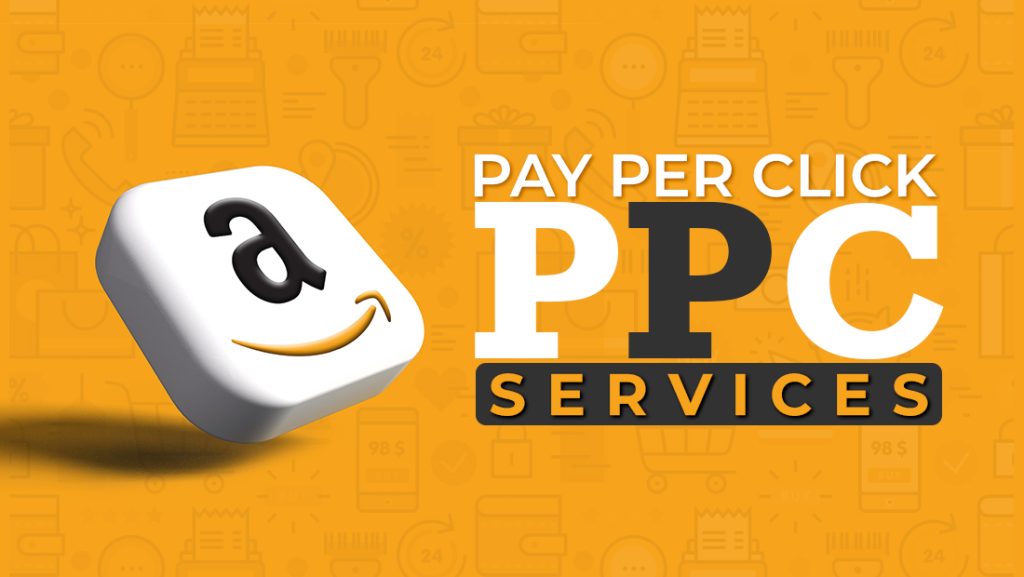Table of Contents
1. What is Amazon PPC Services?
- 1.1 Introduction to Amazon PPC Services
- 1.2 The Role of Amazon PPC in E-commerce
2. How Does Amazon PPC Work?
- 2.1 Step-by-Step Guide to Amazon PPC
- 2.2 The Auction System: How Ads Are Determined
3. Campaign Creation
- 3.1 Selecting Campaign Types
- 3.2 Setting Budgets and Targeting Options
4. Keyword Selection
- 4.1 The Importance of Keywords
- 4.2 Types of Keywords and Match Types
5. Ad Creation
- 5.1 Crafting Compelling Ad Copy
- 5.2 The Significance of High-Quality Images
- 5.3 A/B Testing for Optimization
6. Bidding Strategies
- 6.1 Manual vs. Automatic Bidding
- 6.2 Strategies for Bid Optimization
7. Auction System
- 7.1 Real-Time Auctions on Amazon
8. Monitoring and Optimization
- 8.1 Leveraging Amazon PPC Analytics
- 8.2 Making Data-Driven Decisions
9. Negative Keywords
- 9.1 The Role of Negative Keywords
- 9.2 Identifying and Adding Negatives
10. Scaling Your Success
- 10.1 Expanding Your Reach as Your Business Grows
- 10.2 Best Practices for Sustainable Growth
11. Staying Compliant with Amazon’s Advertising Policies
- 11.1 The Importance of Adhering to Amazon’s Guidelines
12. Conclusion
- 12.1 Unraveling Amazon PPC for E-commerce Success
13. Frequently Asked Questions (FAQs)
- 13.1 What is Amazon PPC, and how does it differ from organic ranking?
- 13.2 How much should I budget for an Amazon PPC campaign?
- 13.3 What’s the significance of keyword research in Amazon PPC?
- 13.4 Is manual or automatic bidding better for Amazon PPC campaigns?
- 13.5 How often should I review and adjust my Amazon PPC campaigns?
- 13.6 What is A/B testing in the context of Amazon PPC, and why is it important?
- 13.7 How can I stay updated with Amazon’s advertising policies?
What is Amazon PPC Services?
Amazon PPC Services is a form of online advertising where sellers pay for their ads only when a potential customer clicks on them. It’s like a virtual auction where you bid on specific keywords to display your products prominently in Amazon’s search results. Amazon PPC Services are an integral part of Amazon Advertising, offering sellers an opportunity to gain more visibility and attract potential buyers.
How Does Amazon PPC Services Work?
Understanding the mechanics of Amazon PPC Services is crucial for its successful implementation. Here’s a step-by-step breakdown of how it works:
1. Campaign Creation
The journey begins with the creation of a PPC campaign. Sellers choose the type of campaign based on their goals:
- Sponsored Products: Promote individual product listings.
- Sponsored Brands: Showcase a collection of related products with a custom headline.
- Sponsored Display: Target shoppers both on and off Amazon.
Once the campaign type is selected, sellers set a daily or lifetime budget and choose targeting options, such as relevant keywords and product ASINs.
2. Keyword Selection
Keywords are the cornerstone of Amazon PPC Services. Sellers must identify keywords that potential customers are likely to use when searching for their products. Amazon provides match types for keywords:
- Broad Match: Ads display when search terms contain the keyword, even if there are additional words.
- Phrase Match: Ads display when the search terms contain the keyword in the exact order.
- Exact Match: Ads display only when the search term perfectly matches the keyword.
3. Ad Creation for Amazon PPC Services
Compelling ad copy and high-quality product images are essential. Sellers craft engaging headlines and descriptions, which should be relevant to the selected keywords. The images need to be visually appealing and professionally done.
4. Bidding Strategies
Sellers can choose between manual and automatic bidding:
- Manual Bidding: Sellers set the maximum bid amount for each keyword. This offers more control but requires ongoing monitoring and adjustment.
- Automatic Bidding: Amazon’s algorithm sets bids based on the likelihood of conversion. It’s less hands-on but can be effective.
5. Auction System
When a shopper searches for a product, Amazon holds a real-time auction to determine which ads appear. The auction considers the relevance and competitiveness of the ads, ad placements, and bid amounts. The winning ad is displayed to the shopper.

6. Monitoring and Optimization
Once the campaign is live, sellers continuously monitor its performance using Amazon’s PPC analytics tools. Data-driven decisions are crucial for success. Sellers can adjust keyword bids, refine ad copy, and target more relevant keywords based on performance data.
7. Negative Keywords
Negative keywords are used to prevent ads from showing for specific search terms. Adding negative keywords is essential to refine ad targeting and reduce wasted ad spend.
8. Scaling Your Success
As your business grows, you can scale your Amazon PPC Services efforts. Expanding campaigns to include more products, increasing budgets, and exploring additional ad types can help you reach a broader audience.
9. Staying Compliant with Amazon’s PPC Services Policies
Amazon has specific guidelines for advertising. Staying updated and adhering to these policies is crucial to prevent campaign issues.
Conclusion
Amazon PPC Services are not a one-size-fits-all solution, but with the right strategy and ongoing optimization, it can significantly boost your product’s visibility and drive sales. Understanding the mechanics of Amazon PPC is the first step toward e-commerce success on the world’s largest online marketplace.
Q1. What is Amazon PPC Services, and how does it differ from organic ranking?
Amazon PPC Services , or Pay-Per-Click advertising, is a method where sellers pay for their ads to appear when shoppers search for relevant keywords. The key difference is that PPC ads are paid placements, while organic rankings depend on relevance, customer reviews, and other factors.
Q2. How much should I budget for an Amazon PPC campaign?
Your budget depends on your goals and the competitiveness of your niche. It’s advisable to start with a budget you’re comfortable with and gradually increase it as you learn which keywords and campaigns perform best.
Q3. What’s the significance of keyword research in Amazon PPC Services?
Keyword research is fundamental to Amazon PPC success. It’s the process of identifying and targeting the keywords that potential customers are likely to use when searching for your products. Effective keyword research can lead to higher visibility and conversions.
Q4. Is manual or automatic bidding better for Amazon PPC Services?
The choice between manual and automatic bidding depends on your expertise and time availability. Manual bidding provides more control but requires regular monitoring. Automatic bidding can be a good starting point for beginners.
Q5. How often should I review and adjust my Amazon PPC campaigns?
Frequent monitoring is essential. It’s recommended to check your campaigns daily in the beginning and adjust bids, keywords, and ad copy as needed. Over time, you can reduce the frequency of monitoring as you identify the most effective strategies.
Q6. What is A/B testing in the context of Amazon PPC, and why is it important?
A/B testing, also known as split testing, involves running two versions of an ad simultaneously to determine which one performs better. It’s crucial for optimizing ad copy, images, and landing pages to maximize conversion rates and return on investment.
Q7. How can I stay updated with Amazon’s advertising policies?
Amazon regularly updates its advertising policies. To stay informed, regularly check the Amazon Advertising policies page on Amazon’s Seller Central. Additionally, you can subscribe to Amazon’s advertising newsletters and forums for updates and best practices.
These FAQs will help address common queries that readers may have after going through the guide on Amazon PPC.





